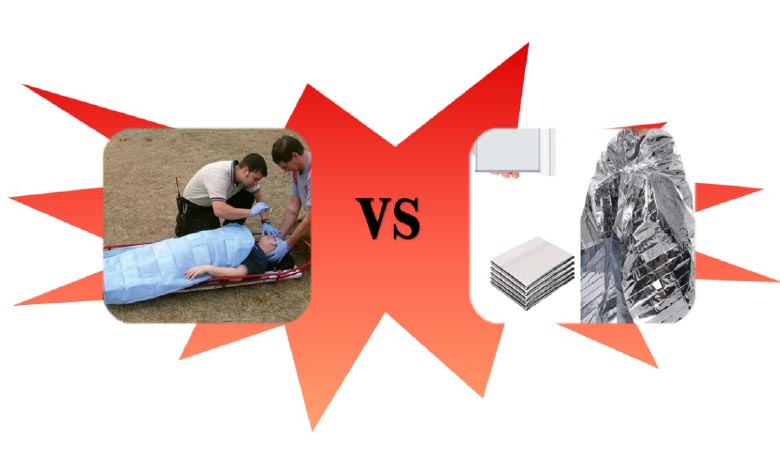In emergency and survival scenarios, staying warm can mean the difference between life and death. While traditional aluminum blankets have been a reliable tool for decades, modern advancements in technology have introduced new solutions to address more severe and demanding situations. Among these, Self-heating Blankets stand out as a revolutionary product, offering active heating capabilities that surpass the limitations of passive thermal blankets.
This article delves into the key differences between Self-heating Blankets and common aluminum blankets, highlighting their materials, functionality, and practical applications. By examining their unique advantages, we aim to provide valuable insights for innovators, like myself, working to develop next-generation products that combine comfort, efficiency, and reliability.
As we explore these groundbreaking solutions, the focus will be on how Self-heating Blankets redefine warmth in emergencies, ensuring safety and survival in the harshest conditions.
1. Common Aluminum Blanket
- Material:
Made from a thin layer of metallized polyester film. The shiny aluminum surface is designed to reflect body heat inward.
- Functionality:
Passive thermal insulation by reflecting infrared radiation (body heat).
Works best when wrapped tightly around the user, minimizing heat escape.
- Advantages:
Lightweight and Compact: Extremely portable, fitting into small emergency kits or backpacks.
Affordable: Low production costs make it widely accessible.
Weatherproof: Water-resistant and windproof, providing additional protection against environmental factors.
- Limitations:
No active heat generation; reliant on body heat.
Ineffective for individuals with low body temperature or prolonged exposure to extreme cold.
Fragile: Susceptible to tearing during rough handling.
2. Self-heating Blanket
- Material and Design:
Composed of durable fabric (polypropylene or polyester) embedded with heating elements or air-activated warmers.
Designed for single-use or limited reuse depending on the application.
- Functionality:
Active Heating: Uses chemical or electrical mechanisms to generate heat. For chemical heating, exothermic reactions are triggered upon activation (e.g., by air exposure ).
Offers uniform heat distribution across the blanket for consistent warmth.
- Advantages:
Rapid Activation: Heats up within minutes of activation, making it ideal for emergency scenarios.
Reliable Warmth: Generates heat even in subzero environments or for hypothermic individuals.
Ergonomic Design: Flexible and comfortable, designed to wrap securely around the user.
Medical Applications: FDA-approved for use in hospitals and emergency care, as it helps prevent shock and stabilizes body temperature.
Versatile Use: Effective in military, outdoor survival, search and rescue, and disaster response settings.
- Limitations:
Higher cost compared to aluminum blankets.
Single-use designs may generate waste; however, reusable models are available.
3. Applications and Use Cases
| Feature | Aluminum Blanket | Self-heating Blanket |
| Ideal Use Case | General emergencies, short-term warmth | Severe cold, hypothermia prevention |
| Performance in Extreme Cold | Minimal | High |
| Activation | No activation required | Chemical or manual activation |
| Portability | Excellent | Good |
| Durability | Fragile | Durable |
Key Advantages of Self-heating Blankets
- Safety and Medical Utility:
Proven to prevent hypothermia and stabilize core temperatures in critical conditions.
- Broad Applications:
Effective for professional use, including military, emergency services, and hospitals.
- Technological Superiority:
Active heat generation makes them suitable for environments where passive insulation fails.
What’s more, Jiangsu Hanyao now can directly produce Self-heating blanket, if you want to develop this new wonderful blankets, please feel free to contact us at sales@jshanyao.com .



